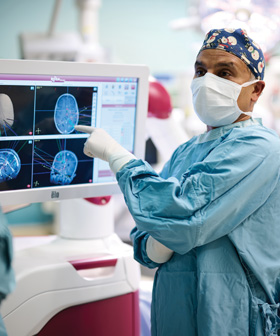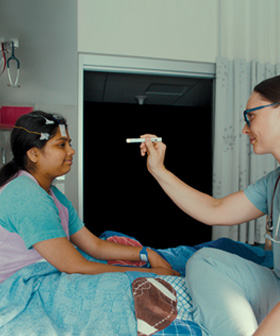A Journey to the Brain’s Depths
From robots to lasers, a bold future in epilepsy care
For children with uncontrolled epilepsy, each day can be overshadowed by the looming threat of a seizure. Simple joys like playing with friends are daunting. Going to school often triggers anxiety. Riding a bike and learning to swim become activities filled with fear. For their families, this means constant vigilance—always on edge, waiting.
Traditional treatments, which range from anti-seizure medications to high-fat diets and surgery, have improved the lives of many children and youth. But for many of the 30% who live with intractable epilepsy, these measures fall short. Today, advanced tools—including surgical robots, precision lasers and genetic research—allow medical experts to venture into the brain in ways that once seemed like science fiction.
Finding what lies beneath
Uncontrolled epilepsy is often caused by small areas of abnormal brain development. Pinpointing the exact spot that triggers seizures is incredibly difficult in something as complex as the brain. Removing it poses an even bigger obstacle.
“A big problem with the brain is getting to where you need to be,” explained Dr. Ash Singhal, Division Head of Pediatric Neurosurgery at BC Children’s Hospital. “It’s like journeying to the centre of the Earth. Traditionally, you’d have to dig a big hole to get there. But now, we have microscopic approaches that allow us to avoid large excavations.”
These advances have transformed the landscape of epilepsy care. What once required large incisions, lengthy hospital stays and considerable risk is now done with tiny incisions, shorter stays and lower risk. One such innovation already making a difference is surgeon-guided robotics.
Five years ago, generous donor support allowed BC Children’s Hospital to introduce a neurosurgical navigation system. It functions like a GPS for the brain—allowing surgeons to place EEG electrodes that measure brain activity, identify the seizure source and map out a surgical path with millimeter precision. Its “arms” can also attach miniature instruments, such as cameras, providing unparalleled visibility into the brain’s hidden depths.
This technology has already propelled epilepsy surgery lightyears ahead. We are now working to bring another transformative change, called laser interstitial thermal therapy (LITT), to BC’s kids. Like many medical breakthroughs, it builds on the foundations of past advances. Once the problem area in the brain is located, LITT uses a tiny probe—no larger than a piece of spaghetti—that gently heats yet powerfully destroys the seizure-causing tissue.
“These advances will allow us to diagnose and treat epilepsy with one single hospital stay,” said Dr. Singhal. “In the near future at BC Children’s Hospital, a child will go home with a few small incisions, wondering if they actually had brain surgery.”
Responsive neurostimulation therapy is another promising development that experts hope to bring to our province’s children in the next couple of years. Used in patients with epilepsy that originates in parts of the brain too risky to remove, like the language networks or areas controlling hand function, the implanted device constantly records a child’s brain waves. At the first signs of a seizure—often before kids realize they are having one—it sends electrical impulses that stop them in their tracks.

Digging deeper for answers
Surgery is just one part of this bold future. Research plays an equally crucial role. At BC Children’s, innovative studies are uncovering the genetic links to epilepsy, providing new clues into its causes and opening the door to more targeted treatments.
“There are over 800 genes linked to epilepsy,” said Dr. Mary Connolly, Director of the Epilepsy Program. “By pinpointing the exact genetic cause in a child, in some instances, we can determine which treatments are likely to be most effective or develop a personalized approach. For example, certain genes suggest that specific anti-seizures medications should be avoided or another treatment is more likely to be effective, such as the ketogenic diet or a medication not typically used to treat epilepsy.”

The quest continues
With these scientific and medical advancements, even children and youth with the most difficult to control forms of epilepsy are becoming treatable. While there’s no telling just how far treatments will evolve in the years to come, one thing is certain—these developments promise to revolutionize epilepsy care as we know it.

